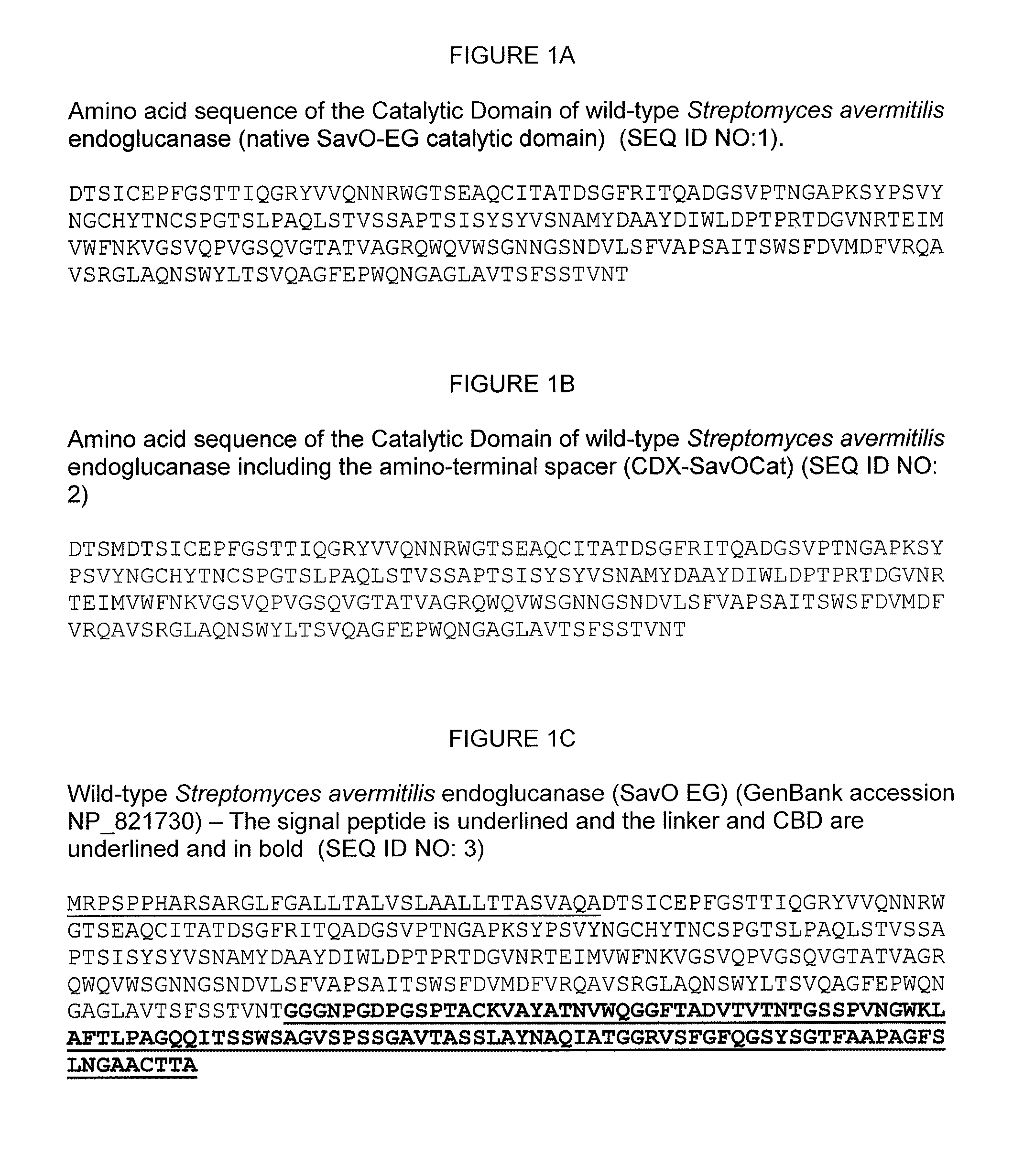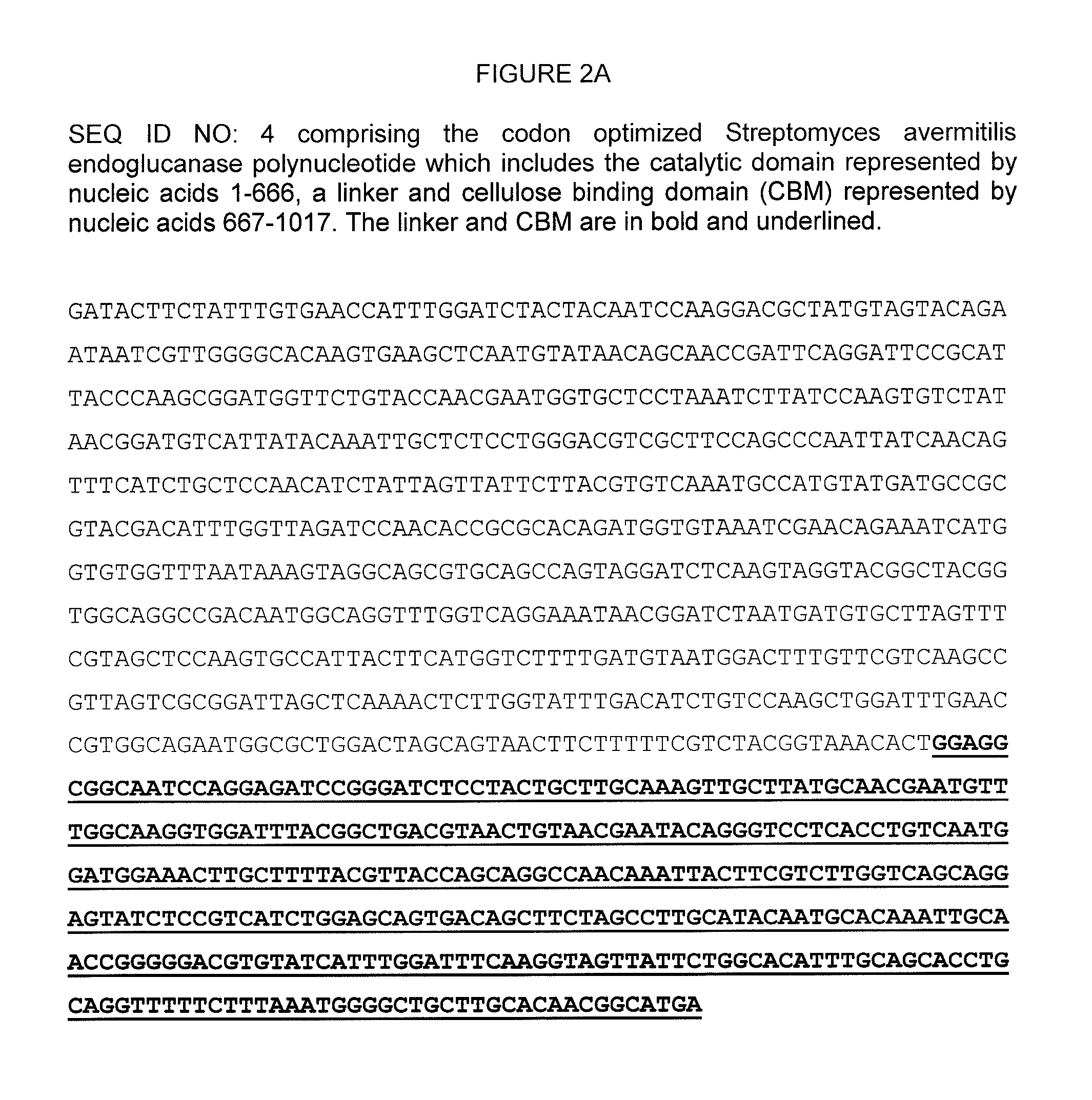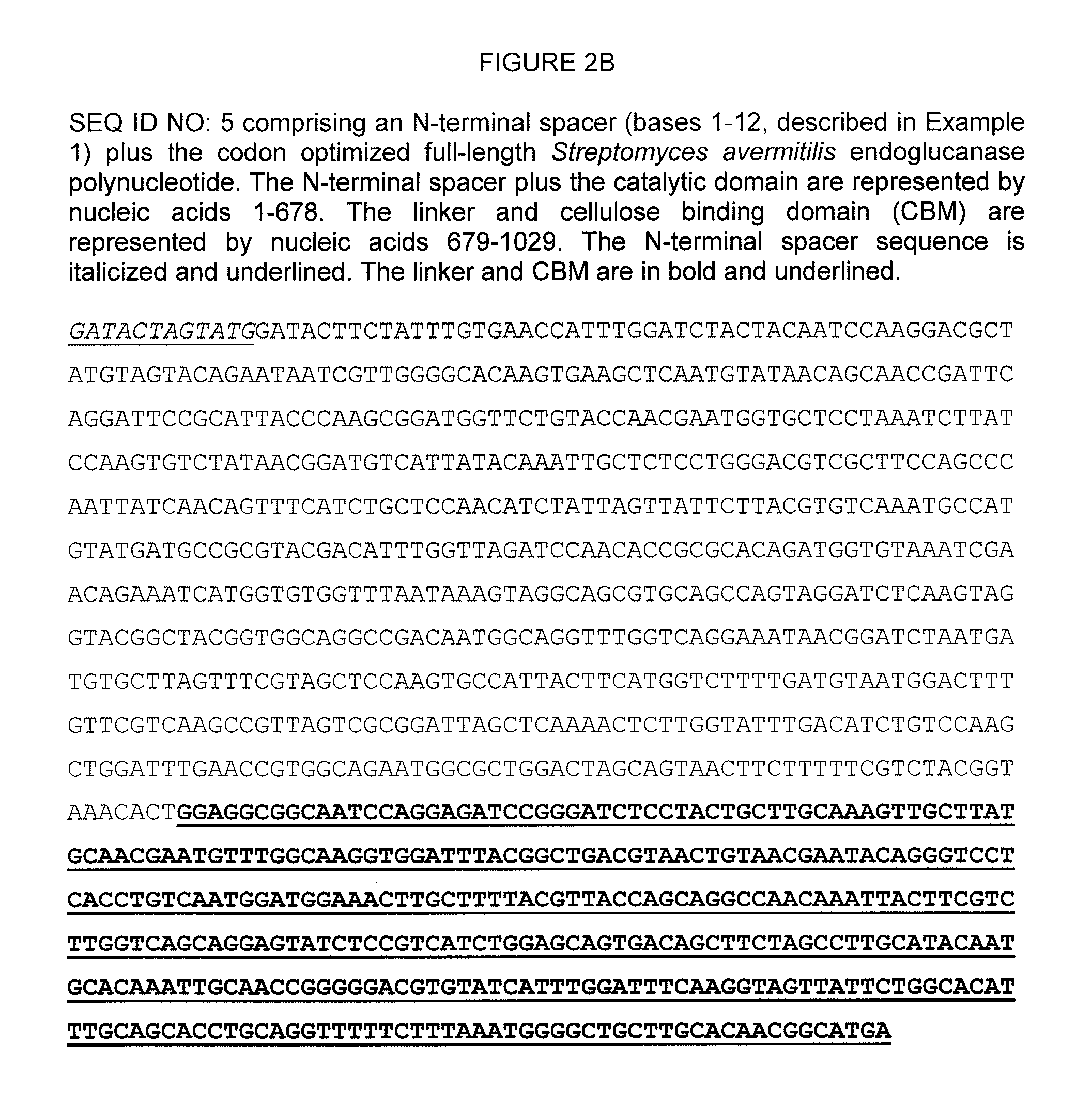Endoglucanases
a technology of endoglucanase and polypeptide, which is applied in the field of variable endoglucanase polypeptide, can solve the problems of increasing the susceptibility of cellulose to hydrolysis, affecting the yield of cellulose-containing mixtures, and difficult production of these enzymes, and achieves the effect of reducing the yield stress of cellulose-containing mixtures and saccharification of cellulosic feedstocks
- Summary
- Abstract
- Description
- Claims
- Application Information
AI Technical Summary
Benefits of technology
Problems solved by technology
Method used
Image
Examples
example 1
Wild type Streptomyces avermitilis Endoglucanase (SavO EG) Gene Acquisition and Construction of Expression Vectors
[0236]A gene coding for Streptomyces avermitilis endoglucanase (SavO EG) was codon optimized for expression in B. megaterium and Escherichia coli based on the reported amino acid sequence (Omura et al., 2001, Proc. Natl. Acad. Sci. U.S.A. 98:12215-20) and a codon optimization algorithm incorporated as described in Example 1 of WO2008042876 incorporated herein by reference. The gene was synthesized by GenScript Corporation (GenScript Corporation, 120 Centennial Ave., Piscataway, N.J. 08854, USA) and the DNA sequence verified. The gene was cloned behind a Bacillus megaterium “optimized” signal peptide plus a spacer region (12 bases encoding amino acid residues DTSM, SEQ ID 16) into an E.coli / B.megaterium shuttle vector pSSBm27 using the BsrGI / NgoMIV cloning sites. The vector pSSBm27 is a modified vector based on the shuttle vector pMM1525 (Boca Scientific Inc., Boca Raton,...
example 2
Shake Flask Procedure
[0238]A single microbial colony of Bacillus megaterium containing a plasmid with the SavO EG gene was inoculated into 1 ml Luria-Bertani (LB) Broth (0.01 g / L Peptone from casein, 0.005 g / L yeast extract, 0.01 g / L sodium chloride) containing 10 μg / mL tetracycline. Cells were grown overnight (at least 16 hrs) in an incubator at 37° C. with shaking at 250 rpm. The culture was then diluted into 50 mL A5 media (2 g / L (NH4)2SO4, 3.5 g / L KH2HPO4, 7.3 g / L Na2HPO4, 1 g / L yeast extract, pH to 6.8), 50 μL of trace elements solution (49 g / L MnCl2.4H2O, 45 g / L CaCl2, 2.5 g / L (NH4)Mo7.O24.H2O, 2.5 g / L CoCl2.6H2O), 750 μL of 20% glucose, 75 μL of 1M MgSO4, 50 μL of 10 mg / mL tetracycline, 50 μL of 2.5 g / L FeSO4.7H2O in a 250 ml flask to an optical density at 600 nm (OD600) of 0.2 and allowed to grow at 37° C. Expression of the SavO EG gene was induced with 0.5% xylose (final concentration) when the OD600 of the culture was 0.6 to 0.8 and incubated overnight (at least 16 hrs). C...
example 3
Inoculation Shake Flask Procedure
[0239]A single microbial colony of B. megaterium containing a plasmid coding for SavO EG was inoculated into 250 ml AS broth (2.0 g / L ammonium sulfate, 7.26 g / L of disodium monohydrogen phosphate, 3.52 g / L of potassium dihydrogen phosphate, 1.0 g / L of Tastone-154 yeast extract, 1.5 ml / L of 1M magnesium sulfate solution, 1.0 ml of 2.5 g / L iron sulfate septahydrate solution, and 1.0 ml / L of trace element solution containing 45.0 g / L of calcium chloride, 49.0 g / L manganese chloride tetrahydrate, 2.5 g / L cobalt chloride hexahydrate, and 2.5 g / L ammonium molybdate hydrate) containing 10 μg / ml tetracycline and 0.5% glucose. Cells were grown overnight (at least 12 hrs) in an incubator at 30° C. with shaking at 250 rpm. When the OD600 of the culture is 3.0 to 5.0 the cells were removed from the incubator and used immediately for inoculating fermentor, or stored at 4° C. until used.
PUM
 Login to View More
Login to View More Abstract
Description
Claims
Application Information
 Login to View More
Login to View More - R&D
- Intellectual Property
- Life Sciences
- Materials
- Tech Scout
- Unparalleled Data Quality
- Higher Quality Content
- 60% Fewer Hallucinations
Browse by: Latest US Patents, China's latest patents, Technical Efficacy Thesaurus, Application Domain, Technology Topic, Popular Technical Reports.
© 2025 PatSnap. All rights reserved.Legal|Privacy policy|Modern Slavery Act Transparency Statement|Sitemap|About US| Contact US: help@patsnap.com



